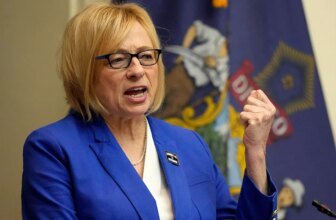Why Are the Democrats Losing Their Grip on American Politics?
Introduction
The Democratic Party, one of the two major political parties in the United States, is currently facing significant challenges that raise a critical question: why are they losing their grip on American politics? This decline in influence can be attributed to a multitude of factors ranging from leadership issues to shifting voter demographics and preferences. Understanding these struggles is essential in assessing not only the current political landscape but also the future trajectory of the party.
One of the main issues contributing to the Democratic Party’s struggles is a perceived disconnect between the party leadership and the broader electorate. Many voters express frustration, feeling that their needs and concerns are not represented adequately. This disconnect can be seen in various policy areas, including economic inequality, healthcare, and climate change, where the public often desires more decisive action than what has been presented. Consequently, this lack of resonance has hampered the party’s ability to engage effectively with a diverse range of voters.
Moreover, the political environment has become increasingly polarized, creating an atmosphere where bipartisanship is often viewed with skepticism. The Democratic Party has struggled to present a united front on key issues, leading to internal divisions that can be exploited by opposition parties. Such fractures affect not only legislative effectiveness but also the party’s credibility with the electorate as it faces competing narratives and criticisms from conservative circles.
As the nation continues to evolve, the demographics of its voters are also shifting. Younger generations express different priorities compared to their predecessors, challenging the Democratic Party to adapt its platform and strategies. If the party wants to regain its footing and maintain its relevance, it must confront these challenges head-on, reevaluate its strategies, and strive to align more closely with the evolving sentiments of the American populace.
The Leadership Vacuum Since Obama

Since the conclusion of Barack Obama’s presidency, the Democratic Party has navigated a notable leadership vacuum that has permeated its structure and strategy. The absence of a unifying figure akin to Obama has contributed significantly to the party’s struggles to maintain its influence and voter support. Under Obama’s administration, the Democratic Party benefited from a charismatic leader who was able to rally both grassroots supporters and established party members, fostering a sense of unity and shared purpose. However, post-Obama, the lack of a similarly compelling leader has left the party divided, leading to fragmented messages and inconsistent policies.
Many potential successors have emerged, yet none have successfully captured the same level of widespread appeal that Obama commanded. Figures such as Hillary Clinton and Bernie Sanders, while prominent, represent different ideological divides within the party. This divergence has resulted in challenges in formulating a unified strategy to address pressing national issues. Furthermore, younger voters, who once viewed Obama as a beacon of hope, have expressed disillusionment with the current leadership, causing a generational rift within the party that has not yet been bridged effectively.
The consequences of this leadership vacuum are evident in electoral outcomes. The Democratic Party has encountered difficulties in maintaining a robust presence in key elections, losing ground in both state and local races. Without clear and decisive leadership, the party has struggled to harness public discontent toward the opposing political factions. Moving forward, addressing the leadership dynamics within the Democratic Party is paramount for reclaiming its influence on American politics. It remains to be seen whether the party can identify a cohesive direction or a charismatic figure ready to evoke the kind of enthusiastic support that characterized Obama’s tenure in office.
Joe Biden: A Symbol of Struggle?
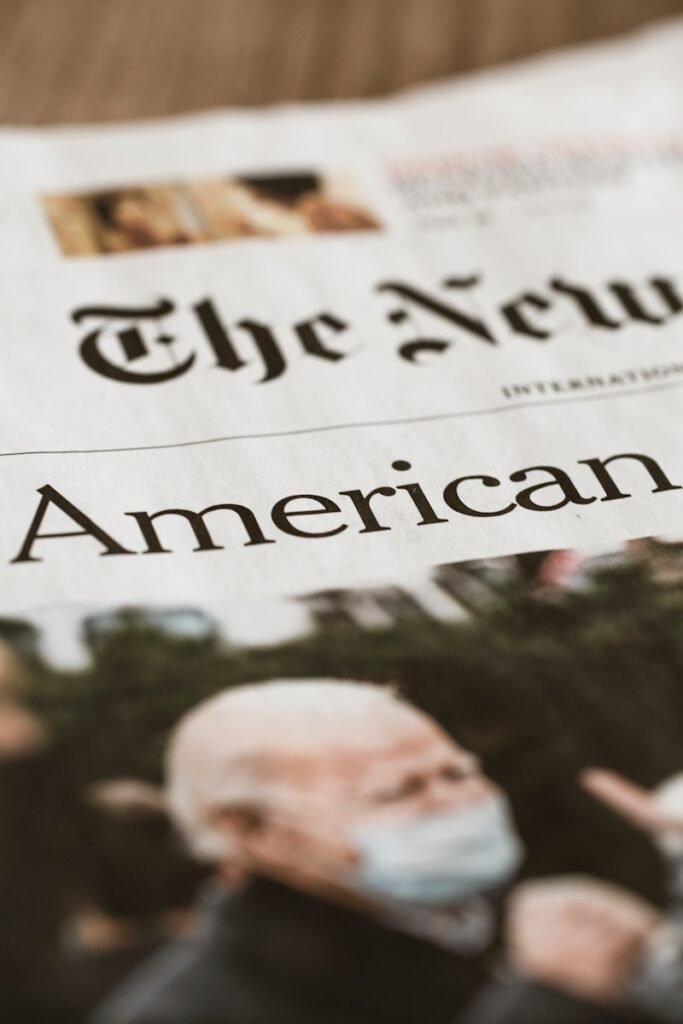
Joe Biden’s presidency has been marked by various challenges that have tested the Democratic Party’s cohesion and effectiveness. As the oldest sitting president in U.S. history, his age has raised questions about his stamina, decision-making capabilities, and long-term leadership potential. Critics argue that his advanced age may lead to concerns over his capacity to champion essential policies or navigate complex international issues, potentially alienating some party members and voters who seek dynamism and resilience in leadership.
Furthermore, the effectiveness of Biden’s administration has been a topic of heated debate. His presidency began with ambitious goals, such as recovering from the economic impacts of the COVID-19 pandemic, implementing sweeping climate policies, and addressing systemic social inequalities. However, progress has often been hindered by internal divisions within the Democratic Party, as differing ideologies on policy priorities have led to significant disagreements and stalled legislative efforts. This has not only tested Biden’s ability to unify his party but has also drawn attention to fractures that may threaten their standing in upcoming elections.
Biden’s approval ratings have seen a decline, reflecting dissatisfaction among various factions within the Democratic base. The rise of inflation, economic uncertainty, and political polarization has created an environment where the party’s messaging appears fragmented and less effective. As a result, while Biden aimed to serve as a unifying figure, his presidency has seemingly exacerbated the existing challenges within the party, casting doubt on whether he can effectively forge a united front that resonates with voters. The complexity of his administration’s legacy remains to be seen, but it undoubtedly highlights the obstacles the Democratic Party faces in maintaining its influence in American politics.
Enabling Controversial Policies: A Leadership Failure
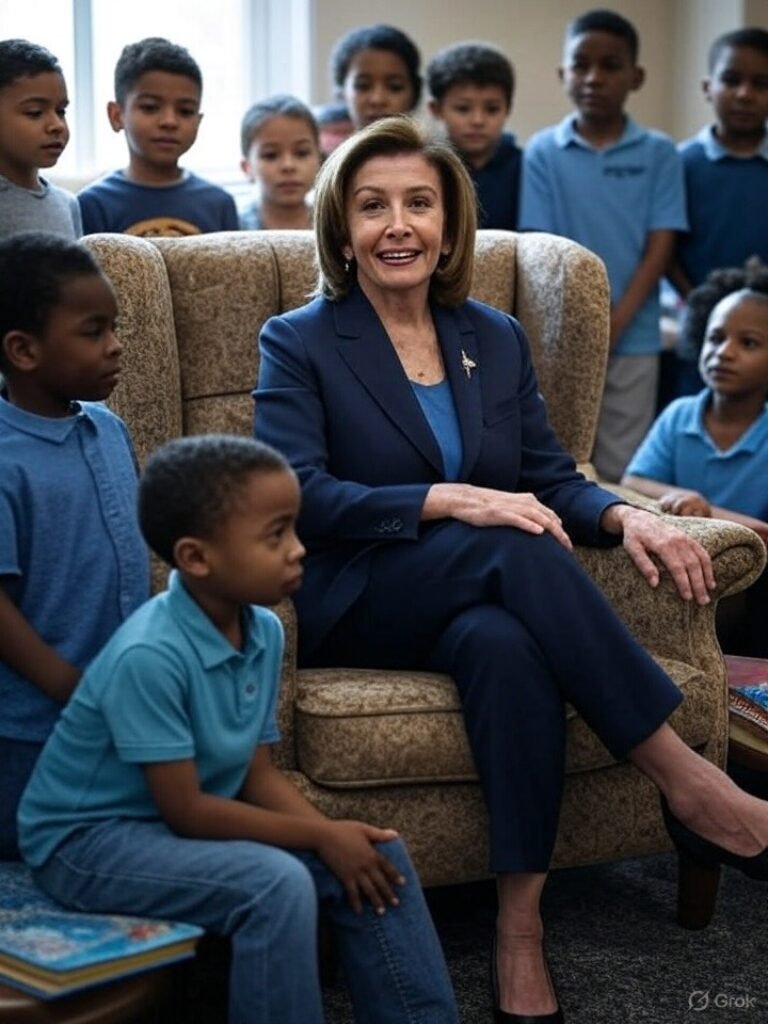
The Democratic Party is currently facing significant scrutiny regarding its policies and positions, particularly concerning issues such as child sex changes and transgender rights for minors. This perception of enabling behavior among its leadership has raised questions about the party’s commitment to its foundational values. By aligning too closely with controversial policies, the Democrats may inadvertently alienate a portion of their base as well as moderate voters who seek a more balanced approach to these sensitive issues.
Critics argue that the party’s stance on these topics reflects a failure to lead with strong moral principles. Instead of guiding the national conversation with compassion and clarity, some perceive the Democrats as reacting to social pressures without establishing a well-defined leadership position. This has resulted in voter mistrust, as potential supporters express concern that the party is prioritizing progressive agendas over practical solutions. The ramifications of such perception could be significant, potentially impacting voter turnout in critical elections.
Moreover, the inability to articulate a comprehensive policy framework regarding these issues has given rise to confusion and dissent within the party itself. Progressive factions may push for more radical reforms, while moderates may advocate for more cautious approaches. This internal conflict can lead to an overall image of disarray that further erodes public confidence in the Democratic Party’s capabilities. As a result, the questioning of voter trust becomes increasingly pronounced, and the theories of a potential loss in election support gain traction.
Ultimately, the challenge for the Democratic leadership lies in finding a pathway that balances progressive ideals with the concerns of a diverse electorate. By addressing these controversial policies with thoughtful deliberation, the party can reinstate its commitment to leadership and, perhaps, regain its footing in American politics.
Resistance to Trump: A Double-Edged Sword
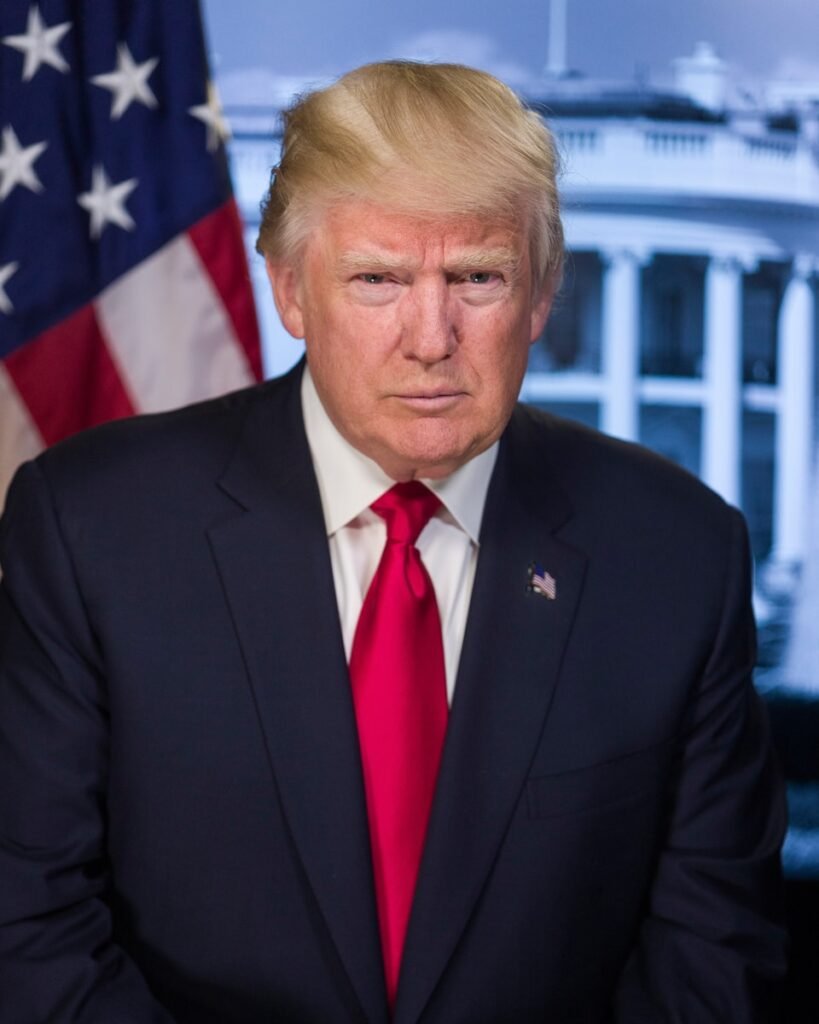
The Democratic Party’s attitude towards Donald Trump has profoundly influenced its identity and strategy in American politics. Since Trump’s presidential campaign in 2016 and his subsequent presidency, resistance has emerged as a foundational element of the party’s framework. However, this response is a complex and multifaceted issue, underscoring a duality where the resistance can be viewed both as a rallying point and a potential hindrance. For many Democrats, opposing Trump symbolizes a commitment to progressive ideals, safeguarding democratic institutions, and protecting marginalized communities. This resistance has mobilized a considerable segment of the electorate, encouraging grassroots movements and new voter initiatives. The ability to unify against a common adversary has provided a sense of purpose and urgency for many within the party.
On the other hand, this unwavering focus on resisting Trump can be counterproductive. Rather than articulating a clear vision for the future, some factions within the party may become overly fixated on opposition, leading to a lack of cohesive policy proposals. This can alienate moderate voters who may be swayed by solutions rather than ideological battles. Furthermore, as Trump remains a persistent figure in American political discourse, his ability to capture media attention continues to challenge the Democrats’ messaging. The party risks reinforcing a narrative that centers around Trump instead of promoting its own agenda, potentially stalling progress on critical issues such as climate change, healthcare reform, and social justice.
Ultimately, while resistance to Trump has galvanized certain constituencies, it is essential for the Democratic Party to strike a balance. By developing a constructive narrative that highlights both the contrast and the vision for a progressive America, the Democrats can better engage the electorate. Focusing on positivity and actionable goals, alongside robust opposition to detrimental policies, can reinstate their position as a formidable force in American politics.
Gavin Newsom: A Case Study in Leadership Failures

Gavin Newsom’s tenure as the Governor of California is illustrative of the broader challenges facing the Democratic Party. Upon taking office in 2019, Newsom was heralded as a progressive leader with ambitious goals related to climate change, healthcare, and housing reform. However, his administration has been marred by a series of controversies and perceived missteps that have raised doubts about his efficacy as a leader. While many of his initiatives align with Democratic priorities, the execution of these plans has often led to public discontent and criticism.
One significant area in which Newsom has faced backlash is the handling of California’s homelessness crisis. Despite proposing extensive funding and solutions, the results have been underwhelming. Critics argue that the Governor’s approach has been too reliant on bureaucratic measures rather than actionable solutions. This has not only frustrated voters but has also highlighted a disconnect between Democratic leadership and constituents’ needs.
Furthermore, Newsom’s controversial decision to attend a lavish dinner party during the COVID-19 pandemic sparked considerable outrage, leading to accusations of hypocrisy, particularly given his strict lockdown mandates. This event underscored a perceived inability to connect with the electorate, which is crucial for any leader, especially within the party. For many Democrats, such actions have raised questions about whether leaders like Newsom truly embody the party’s values and priorities.
In addition, Newsom’s fluctuating approval ratings indicate a struggling grasp on public sentiment. The decline in support reveals a growing disenchantment among voters, particularly in the face of ongoing economic challenges and the lingering effects of the pandemic. This case study of Gavin Newsom reflects a broader issue within the Democratic Party—whether its leaders can effectively navigate the complexities of modern governance while remaining true to the needs and values of the electorate.
Shift in Support: The Republicans’ Rise
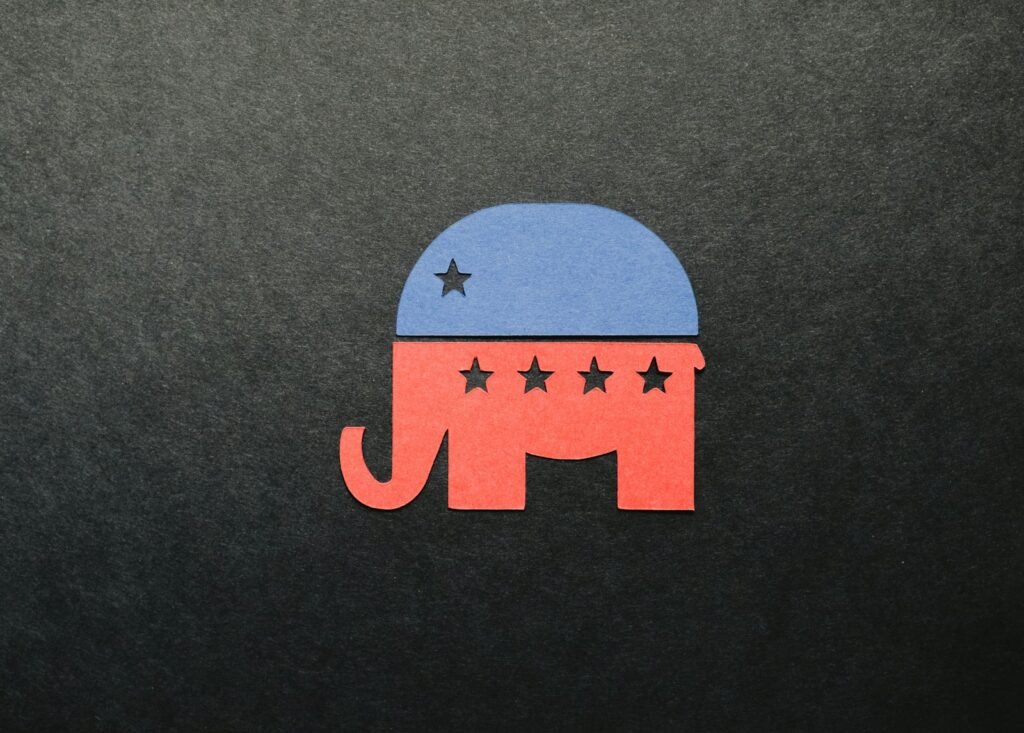
In recent years, there has been a significant shift in political support among American voters, increasingly favoring the Republican Party over the Democrats. This realignment can be attributed to various factors, with the most notable being the Republicans’ appeal to working and middle-class families. Many of these voters feel that the Republican Party’s policies resonate more with their immediate needs, especially concerning economic stability and job opportunities. As a result, there is a growing perception that the GOP is better suited to address the challenges faced by these communities.
The Republicans have strategically positioned themselves as champions of economic growth, employing messaging that underscores lower taxes and reduced regulation as pathways to prosperity. This approach has proven attractive to many who are seeking more favorable conditions for their businesses or employment opportunities. In contrast, the Democratic Party has increasingly focused on progressive social policies, which, while important, may not seem as directly linked to the everyday economic concerns of many Americans. The Democratic strategies often prioritize broader social issues, leaving some voters feeling disconnected from the party’s agenda.
Moreover, cultural factors also play a significant role in this political shift. Many working and middle-class individuals are drawn to the Republican Party’s narrative promoting traditional values and a strong national identity. This appeal has been particularly potent in regions that have historically been indispensable to the Democratic base, such as the Rust Belt. The disconnect between the Democratic ideals and the lived experiences of these voters has left an opening for the Republicans to gain traction.
As the political landscape continues to evolve, it is essential to examine these dynamics to understand why the Democrats are losing their grip on American politics. The Republican Party’s ability to empathize with the struggles of working and middle-class families highlights a critical area where the Democrats may need to recalibrate their strategies to recapture lost support.
Internal Conflicts: A Party Divided

The Democratic Party, once a cohesive unit driven by a shared vision, has increasingly been characterized by internal divisions. These factions often emphasize differing priorities that reflect the broader spectrum of values and beliefs among party members. This disunity has emerged as a critical factor contributing to the party’s waning influence in American politics.
One of the most prominent rifts exists between the progressive wing and the moderate faction. Progressives advocate for sweeping reforms aimed at addressing systemic issues such as climate change, income inequality, and social justice. In contrast, moderates tend to support more incremental changes that appeal to a broader constituency. This schism often results in public disagreements over key policies, diluting the party’s ability to present a unified front during elections.
Additionally, the rise of grassroots movements has introduced new dimensions to party politics. While energizing a segment of the electorate, these movements can also create friction within the party’s existing structures. Differences in strategic approach often see progressive activists pushing for bold initiatives that may alienate centrist voters, a factor critically assessed by many political analysts. The struggle for the party’s future direction exacerbates internal conflicts further, leading to a perception of fragmentation.
Moreover, the competition for leadership roles has also fueled tensions within the party. With various factions vying for control, decisions often become mired in debate, resulting in a lack of timely and decisive action. This indecision makes it challenging for the Democratic Party to address pressing issues or articulate a coherent strategy to attract voters effectively. In an era where unified messages resonate with the electorate, these internal conflicts could significantly hinder the party’s ambitions for future success.
Conclusion: The Future of the Democratic Party
The challenges currently facing the Democratic Party are emblematic of a broader crisis within American politics. From dwindling voter support in critical regions to internal divisions that hinder cohesive strategy, it is clear that the party is at a crossroads. As highlighted throughout this discussion, factors such as shifting demographics, the rise of independent voters, and discontent with the establishment have all contributed to the party’s diminished influence. These issues not only impact electoral outcomes but also raise significant questions about the party’s identity and purpose moving forward.
Addressing these challenges necessitates a deep reflection on core values and priorities. The Democratic Party must ask itself whether it can effectively engage with disenfranchised groups or those who feel alienated from mainstream politics. Building a platform that addresses the economic and social concerns of all Americans, particularly those in rural and underserved areas, will be critical in reclaiming lost ground. Furthermore, fostering unity among diverse factions within the party can create a more robust and inclusive base.
As we look to the future, it becomes essential to consider possible strategies for recovery. Could a shift toward more progressive policies resonate with younger, more diverse voters? Or might a centrist approach help regain trust with moderates and independents? These questions will shape not only the Democratic Party’s recovery efforts but also the political landscape in the United States as a whole. The trajectory currently observed, characterized by increasing polarization and dissatisfaction, may prove unsustainable unless addressed proactively.
In summary, the Democratic Party’s future hinges on its ability to adapt to the evolving political climate. By focusing on inclusivity and responsiveness to the electorate’s needs, the party can strive toward regaining its former relevance and authority within American politics.





